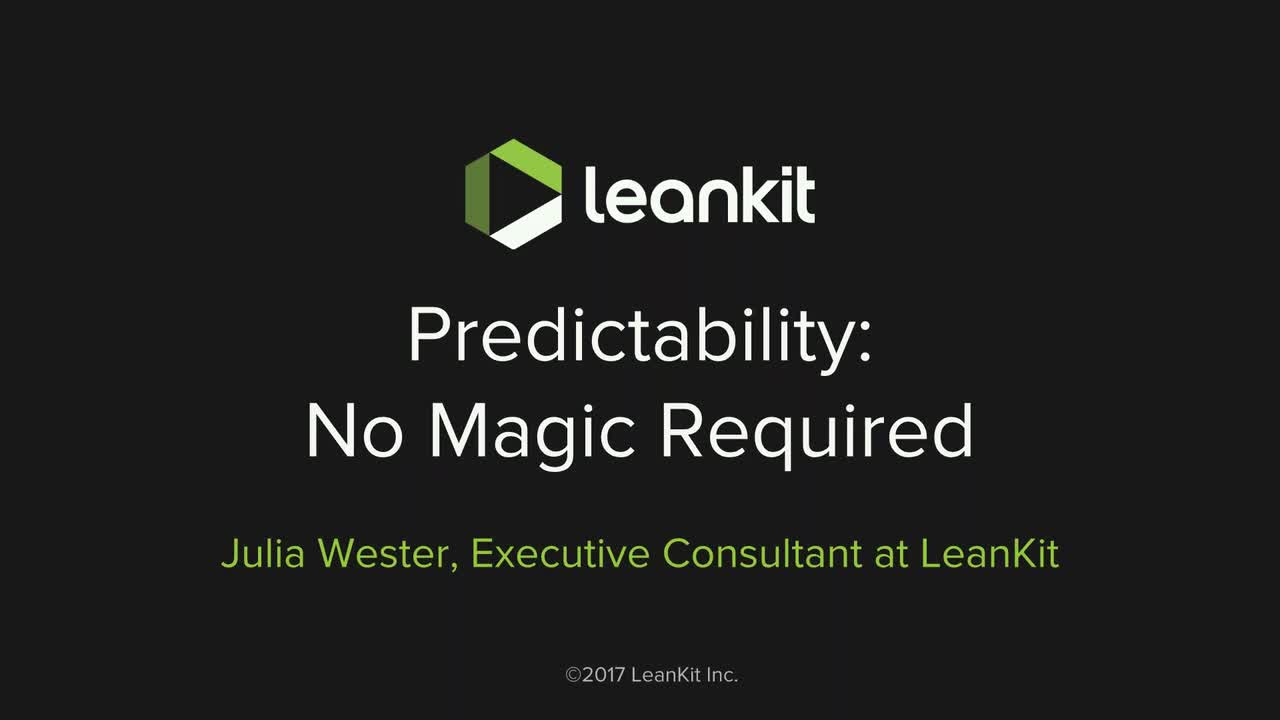
In this webinar, I’ll provide guidance around choices you can make that impact your ability to meet your commitments with confidence.
You’ll learn how to predict the cycle time of work before it’s finished. I will also explain the basics of queuing theory, and the relationship between queue size, capacity utilization, and cycle times.
In this Webinar
Armed with this insight, you’ll be able to:
- Monitor your workflow for leading predictability indicators.
- Make informed choices to maximize your value throughput.
- Forecast delivery with better accuracy using Planview AgilePlace data and analytics.
There’s no magic required in achieving predictable delivery. The secret is using past performance data to predict future behavior.
Watch the Recording
Q&A
Here’s some answers to attendees’ questions we didn’t get to:
Estimates are based on skills and expertise, what advice do you have for improving predictably for a new cross-functional team?
- The value found in the practice of estimating lies more in what we learn about the work than in the estimate we give. I think this because our estimates are so often wrong – even when you have extremely experienced experts. Given that level of expertise doesn’t guarantee accurate estimates, I think we should start moving towards using probabilities to forecast delivery dates instead. Like Troy Magennis from FocusedObjective.com advises people, do both and compare the results to find out what works best for you.
How do you differentiate between tasks/projects in the queue vs. ideas that would be good projects to execute? If you know the idea exists, does that mean it’s in the queue?
- I think that it is important to determine your line of commitment on your Kanban board. My team’s board has an incoming (vertical) lane in which all new cards are dropped. These stay there until they have been reviewed and classified into one of two lanes: ‘Could Do’ or ‘Must Do’. Cards that have potential value but are still considered optional are placed in the ‘Could Do’ column. Cards that we believe we must do, for one reason or another, are placed in the ‘Must Do’ lane. When cards enter this lane, they have passed our line of commitment. I consider this a queue. If the number of cards we have committed to build up faster than we can pull them out then our queue of commitments grows and cycle/lead times also grow.
- Keep in mind though, if you let your incoming lane grow and grow, that means you may have potential ‘Must Do’ items lingering there. My team meets on a cadence to triage these items and avoid ignoring critical requests.
How do you convince people to take queue theory seriously? What do you do with historically collected queues (technical debt accumulated over many years)?
- My suggestion is to kill all the zombies. This is a term for work that’s dead, but still hanging on to hope that one day it will be completed. We already have challenges doing work that is considered critical. If you have a backlog that would take years to process, even if you stopped doing any new work, it is time to make some important decisions. Cutting your backlog down to a reasonable amount of promising work cuts down on unnecessary management overhead as well, freeing you up to do more value-added work. Also, I think people who have requested the work will come to realize that being told no is more respectful being ignored.
On the topic of assigning work, how do you handle multiple pieces of work that depend on each other?
- Handling dependencies is more about coordinating in advance to be ready to start when needed than knowing exactly who will do the work. If multiple people have the skills to do a piece of work that something else is dependent on, you actually reduce the chance it will be done in time if you assign it in advance to a single person. My suggestion is to visualize which work is a priority – one of my favorite ways to do this is to use position in a lane to show priority – and ensure that you can see if a card blocks other work (meaning it is a dependency for another piece of work) or it is dependent on other work before it can be started. Planview AgilePlace uses card connections to help us visualize and manage this situation. Keep in mind that no process can completely remove the need for clear and timely verbal communication and coordination.
Click here to access these slides.


![A Global Collaborative Work Management Blueprint [Video]](https://blog.planview.com/wp-content/uploads/2019/07/A-Global-Collaborative-Work-management-blueprint.png)


